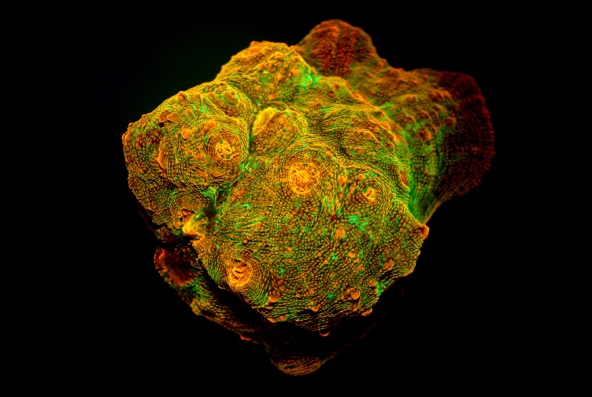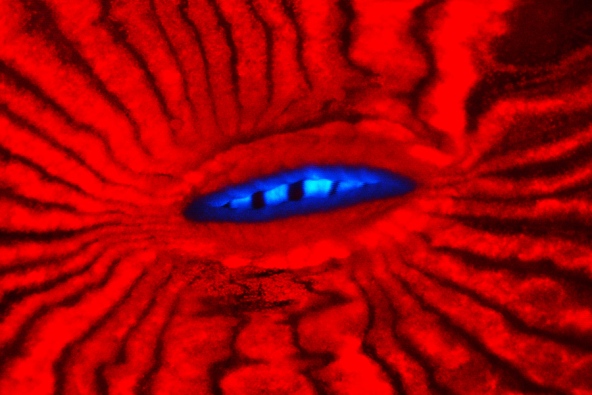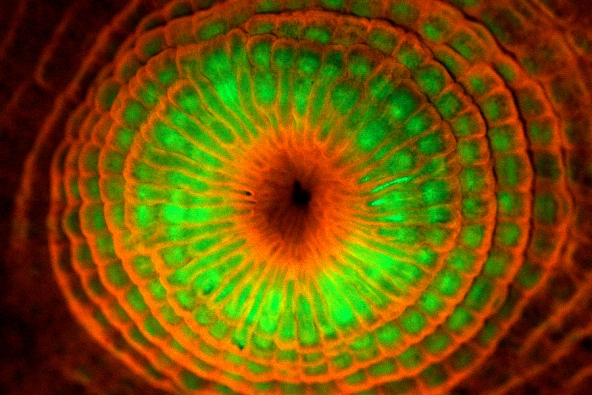Researchers have pinpointed the reason that deep-water corals emit an eerie glow: to help their algae do photosynthesis.
Scientists know that in shallow waters, the organisms light up green, using fluorescent proteins as a kind of sun block. The proteins soak up harmful ultraviolet rays, re-emit green light and shield their symbiotic algae, which supply most of the corals’ energy needs through photosynthesis.
In 2015, a team led by Jörg Wiedenmann at the University of Southampton, UK, found that deep-dwelling corals also fluoresce — this time in an array of vivid yellows, oranges and reds. Some of these organisms live in water as deep as 165 metres, where little sunlight reaches them, and most of what does is in the blue part of the spectrum. So the researchers suspected a different reason for the glow.
Now, Wiedenmann thinks his team has the answer: the corals use a fluorescent protein to make the most of the small amount of light available in their habitats for photosynthesis. In other words, the deep-water corals and their shallow relatives fluoresce for opposite reasons.
Blue light is more useful for photosynthesis, but red light penetrates farther into coral tissues. So corals use a red fluorescent protein to convert the blue light into orange–red wavelengths. That means it reaches more of the organisms’ symbiotic algae, helping the corals to survive by making as much food as possible through photosynthesis. The researchers’ work is published in Proceedings of the Royal Society B1.
“Corals need special features to adjust to life in these low-light depths for the benefit of their vital photosynthetic partners,” says Wiedenmann. The finding “shows how sophisticated the symbiosis between corals and their algal partners can be”.
As researchers worry about the fate of the world’s corals after a spate of bleaching events caused by rising water temperatures, some marine scientists have suggested that stressed shallow-water corals could adapt and find refuge in deeper waters.
However, says Wiedenmann, the study shows that the protein pigments expressed by shallow corals are “biochemically and optically distinct” from those of their deep-dwelling counterparts. “Not many of them may have the capacity to escape to deeper waters,” he says. “We need to make sure that reefs in shallow water stay habitable for corals.”
Source: http://www.nature.com/
Dear User/Visitor! Please, answer on our questions: tick off one of the positions – your answer will make us able to improve our site and make it more interesting and useful!




